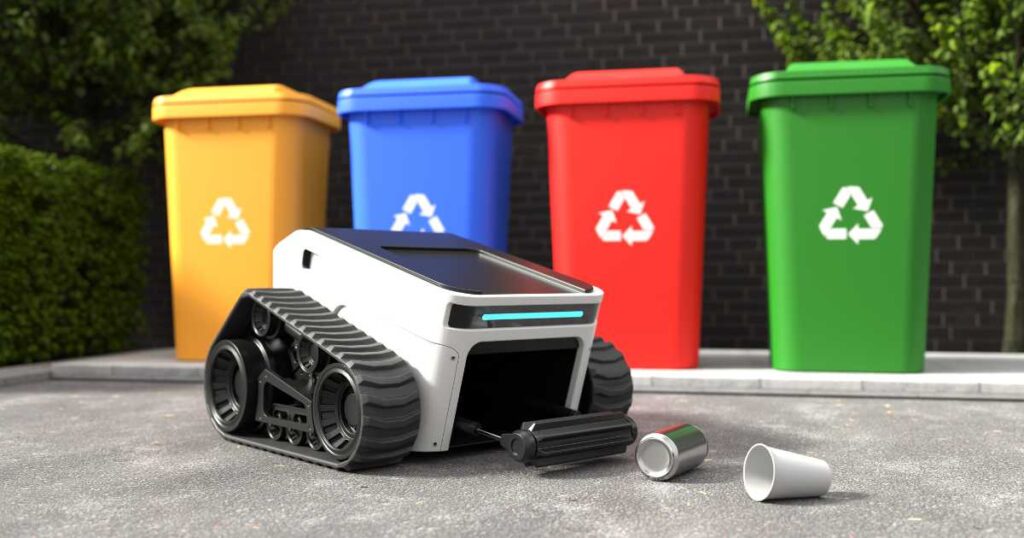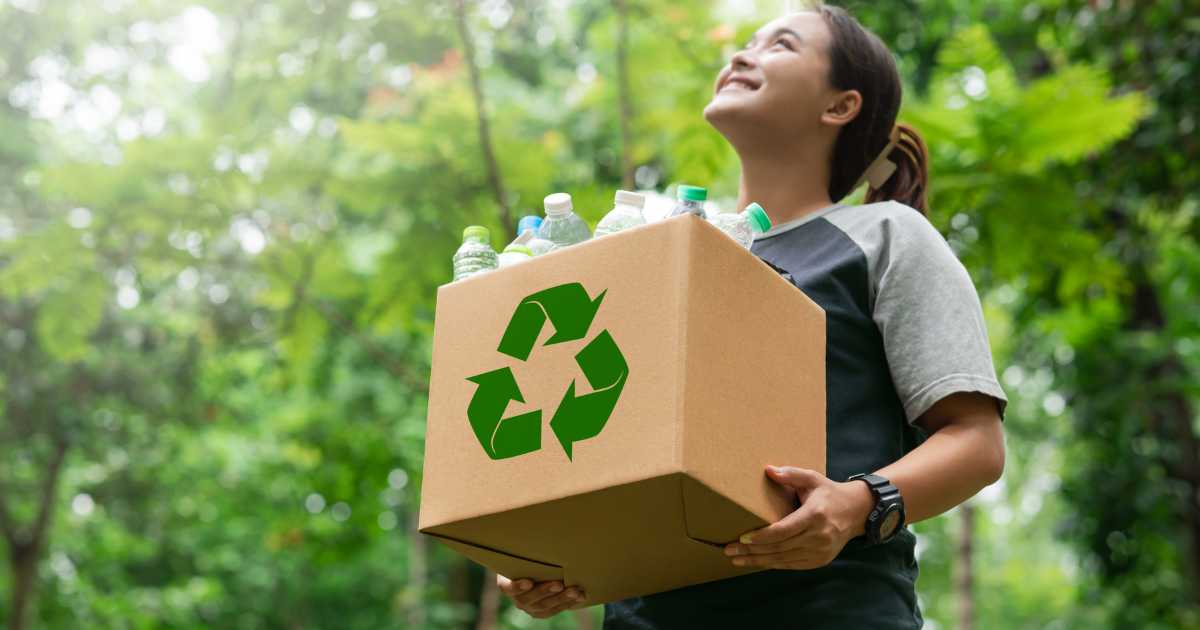In today’s rapidly advancing digital age, the integration of automation and innovative solutions has transformed the waste management industry. By leveraging cutting-edge technologies, companies are addressing the growing demand for efficient waste disposal and recycling across various sectors.
These advancements not only streamline waste management processes but also contribute to a more sustainable and eco-friendly future.
Smart Garbage Bins
At the forefront of modern waste management, smart garbage bins are revolutionizing how waste is collected, sorted, and managed. These advanced bins are equipped with sensors that can identify and classify solid waste, such as plastics, metals, and organic matter.
Additionally, many models feature built-in compactors or shredders, reducing the volume of waste and making transportation more efficient. By monitoring fill levels in real time, smart bins optimize collection routes and schedules, minimizing unnecessary trips and promoting eco-friendly disposal practices.
These bins are especially effective in urban areas, where they help manage high volumes of waste while reducing environmental impact.
For larger waste disposal needs, using a dumpster rental can further streamline the process.
Trash Level Sensors
Trash level sensors have transformed the way waste containers are monitored. Installed in garbage bins or dumpsters, these sensors provide constant updates on the fullness of containers. This helps prevent overflow by ensuring timely collection, while also enabling waste management teams to optimize pickup routes.
The data collected by these sensors is invaluable for improving recycling strategies and minimizing waste generation. By playing a vital role in urban environments, trash level sensors contribute to cleaner, more organized surroundings and smarter city planning.
Additionally, understanding dumpster rental costs can help businesses plan their waste management budget more effectively.
Smart Recycling Robots
The combination of robotics and artificial intelligence has led to the development of smart recycling robots, which are significantly enhancing the accuracy and efficiency of waste sorting. Using sensors and AI algorithms, these robots can identify and segregate materials like plastics, metals, glass, and paper with exceptional precision.
Beyond sorting, they also provide guidance on proper recycling methods, fostering awareness and education about sustainable practices. These robots are not just improving efficiency and reducing landfill dependency; they are also paving the way for a cleaner future by minimizing human error and operational costs.

Advanced Garbage Trucks
Modern garbage trucks have evolved into high-tech machines designed to improve waste collection efficiency and reduce environmental impact. Equipped with load measurement sensors, these trucks can weigh trash as it’s collected, providing valuable data on waste volumes.
This information is processed by intelligent software to calculate the most efficient pickup routes and schedules, factoring in traffic and other variables. By minimizing travel time and optimizing fuel consumption, these trucks contribute to lower emissions and a greener approach to waste disposal.
Additionally, they integrate seamlessly with smart systems, creating a unified and efficient waste management network. Pairing this with efficient waste management practices can significantly reduce the environmental impact.
Pneumatic Waste Collection Systems
Pneumatic waste collection systems represent a cutting-edge solution for modern cities. Using underground pipelines and high-pressure air, these systems transport waste directly from collection points to central processing facilities.
By eliminating the need for traditional garbage trucks, they reduce noise, air pollution, and traffic congestion. These systems also free up valuable urban space and are easily integrated into existing infrastructure, making them a cost-effective modernization option for cities.
Already adopted in cities like Stockholm and Barcelona, pneumatic systems are proving to be a pivotal innovation in the future of waste management.
For projects requiring significant waste removal, a construction dumpster rental might be a better fit.
Data-Driven Waste Management Platforms
Data analytics platforms are revolutionizing waste management by providing actionable insights. These systems collect and analyze data from smart bins, sensors, and trucks, helping waste management companies track waste generation patterns and adjust collection schedules.
They also encourage recycling by identifying areas where efforts can be improved and predict future waste trends using historical data. With the rise of Internet of Things (IoT) technology, these platforms are becoming increasingly vital for optimizing waste management systems and creating smarter, more sustainable cities.

Waste-to-Energy Technologies
Waste-to-energy (WTE) technologies offer a dual benefit: managing non-recyclable waste while generating renewable energy. These systems utilize processes like incineration, gasification, and anaerobic digestion to convert waste into energy sources such as electricity and biogas.
WTE technologies reduce landfill dependency while contributing to sustainable energy production, making them a critical component of modern waste management. By turning waste into a resource, these systems exemplify the circular economy model and provide a sustainable solution to global waste challenges.
E-Waste Drop-Off Spots
Have you discovered the convenience of e-waste drop-off locations? These spots provide an effortless way to recycle your old electronic devices while promoting a cleaner environment. What makes them even more appealing is that some locations offer compensation for the gadgets you bring in.
Imagine decluttering your home, responsibly disposing of outdated electronics, and earning some extra cash in the process—it’s a win-win! These drop-off centers don’t just simplify recycling; they also play a vital role in educating the community about proper e-waste disposal practices.
By raising awareness and encouraging responsible behavior, they contribute significantly to protecting the planet and promoting sustainable resource use.
Recycling Apps – Tech at Your Fingertips
In today’s tech-savvy world, recycling apps are quickly gaining popularity as they make recycling easier and more accessible than ever. These digital tools cater to various materials, including plastics, glass, and paper, and they’re designed to guide users toward smarter waste management.
Some apps offer innovative features, like barcode scanning, to instantly check whether an item is recyclable. Others provide practical tips to reduce waste or help users locate the nearest recycling centers with just a tap. These apps empower individuals to make environmentally conscious decisions with minimal effort.
Whether you’re looking to reduce your carbon footprint or simply learn more about recycling, these apps are here to assist. Give one a try—you might be surprised by how simple and rewarding recycling can be!
Frequently Asked Questions
What happens to the e-waste collected at drop-off locations?
After collection, e-waste is typically sent to certified recycling facilities where it is sorted, dismantled, and processed. Usable components are recovered, hazardous materials are safely disposed of, and raw materials like metals and plastics are recycled into new products.
Can e-waste drop-off locations recycle batteries and chargers?
Yes, most e-waste drop-off sites accept batteries and chargers, as they are common components of electronic devices. However, it’s best to check with the specific location to confirm their policy on these items.
How do I prepare my electronics for recycling?
Before dropping off electronics, ensure personal data is erased from devices like phones, computers, and tablets. Remove any batteries or accessories that are not accepted, and package items safely to prevent damage during transport.
Are there limits on the amount of e-waste I can bring?
Some locations may have restrictions on the quantity of e-waste they accept per visit, especially for large or bulk items. Contact your local drop-off site for details on any volume limits.
Are e-waste drop-off locations available in rural areas?
E-waste drop-off locations are more commonly found in urban and suburban areas. However, many organizations run special collection events or mobile units to serve rural regions. Check with local authorities or recycling programs for options in your area.
Do recycling apps support all types of recyclable materials?
While many recycling apps are versatile, some specialize in specific materials, like electronic waste, plastics, or hazardous items. Explore multiple apps to find one that best suits your needs.
Can I donate working electronics instead of recycling them?
Yes, if your electronics are still functional, many charities and organizations accept donations to refurbish and distribute them to those in need. Donating extends the life of devices and reduces waste.
Are there any government programs supporting e-waste recycling?
Many governments run e-waste recycling initiatives or partner with certified recyclers to provide accessible solutions. Look for government-approved programs in your area to ensure safe and responsible recycling.
What are the environmental benefits of e-waste recycling?
E-waste recycling reduces the need for mining raw materials, prevents harmful substances from polluting soil and water, and conserves energy. It also minimizes landfill waste, contributing to a cleaner and healthier environment.
Can small businesses use e-waste drop-off services?
Yes, many drop-off locations cater to both individuals and small businesses. However, businesses may need to contact the site in advance if they plan to recycle larger volumes of e-waste.
Conclusion
Advancements in recycling technology are making sustainable practices more accessible and efficient for everyone. E-waste drop-off spots offer a simple, often rewarding way to recycle old gadgets, while recycling apps empower individuals with the tools and knowledge to embrace eco-friendly habits.
Together, these innovations are shaping a future where environmental conservation and responsible resource use are part of everyday life. If you’re ready to take the next step toward sustainability, explore these options today!
